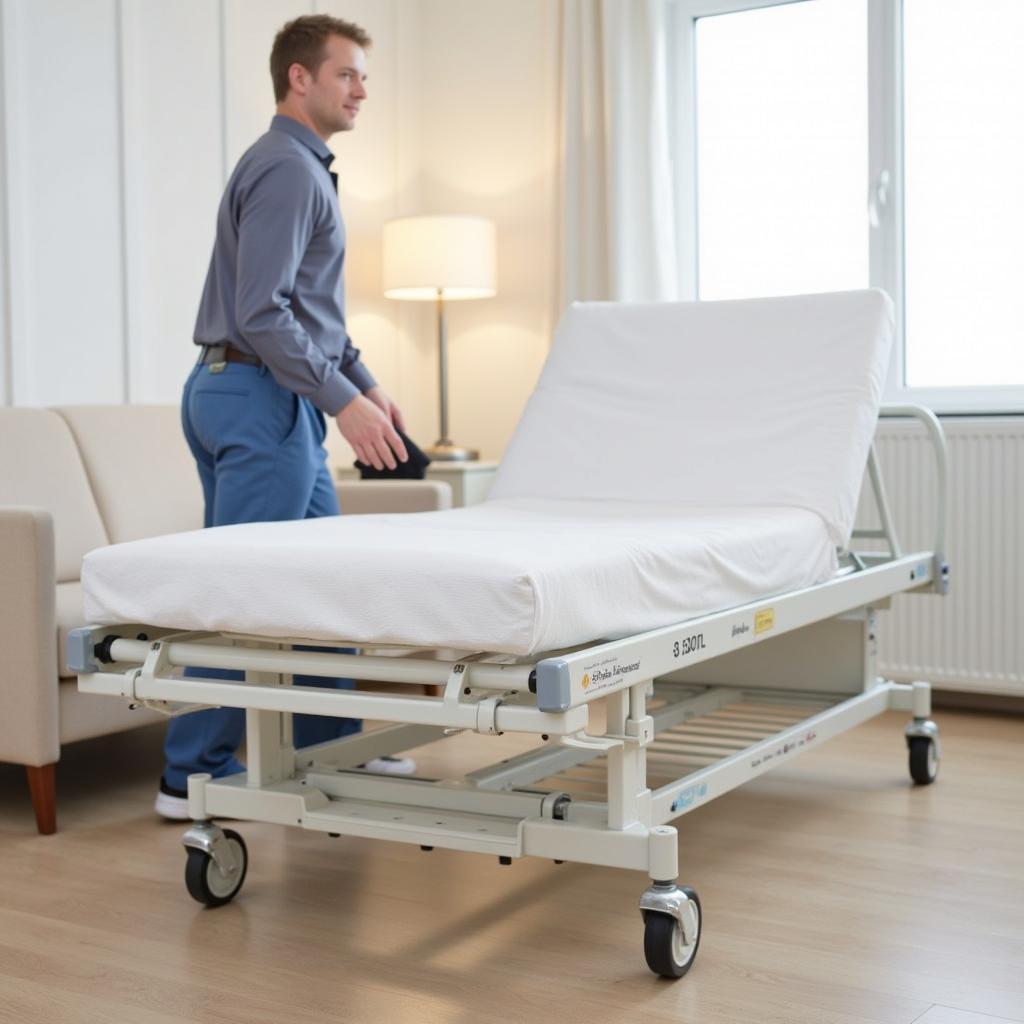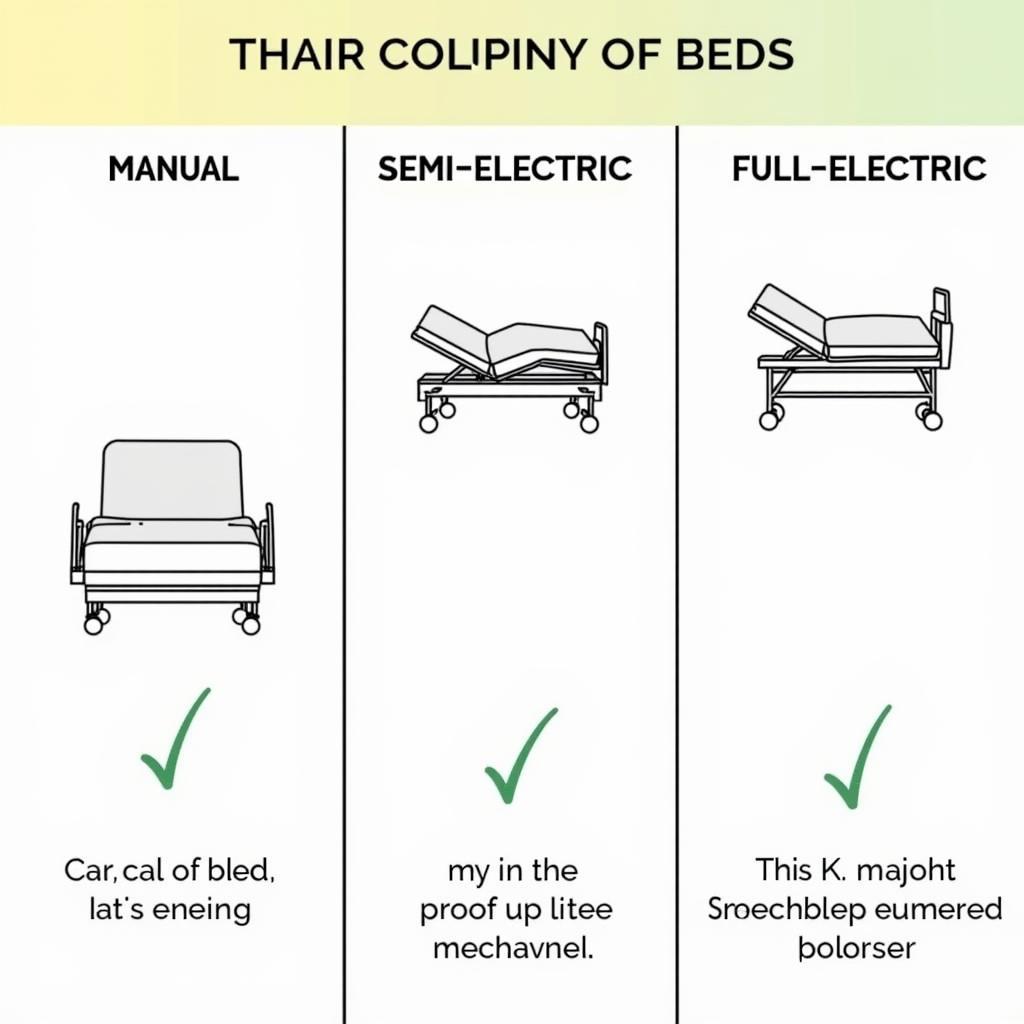Choosing the right homecare hospital bed is a significant decision that can directly impact a loved one’s comfort, safety, and recovery. These beds offer more than just a place to sleep; they provide essential support and positioning options crucial for managing various medical conditions.
Understanding Homecare Hospital Beds
Homecare Hospital Beds are specifically designed to provide a comfortable and medically supportive sleeping environment for individuals recovering from surgery, illness, or managing chronic conditions. Unlike traditional beds, they come equipped with features like adjustable height, head and foot elevation, and side rails, allowing for customized positioning and easier caregiving.
 Adjustable Homecare Hospital Bed
Adjustable Homecare Hospital Bed
Why Choose a Homecare Hospital Bed?
There are several reasons why a homecare hospital bed might be recommended:
- Enhanced Comfort: The adjustable positioning helps alleviate pain, improve circulation, and promote better sleep.
- Increased Safety: Side rails prevent falls, while the adjustable height makes getting in and out of bed safer.
- Facilitate Caregiving: The bed’s features make it easier for caregivers to assist with tasks like repositioning, changing linens, or providing personal care.
- Improved Independence: For individuals with mobility issues, these beds can offer greater independence in adjusting their position and getting in and out of bed.
Types of Homecare Hospital Beds
Navigating the different types of homecare hospital beds available can seem daunting. Here’s a breakdown to help you understand the options:
- Manual Beds: These beds are adjusted manually using hand cranks. They are a cost-effective option, but may not be suitable for those who require frequent adjustments.
- Semi-Electric Beds: These beds offer a combination of manual and electric adjustments. Typically, the head and foot sections are electrically controlled, while the height adjustment remains manual.
- Full-Electric Beds: All adjustments in full-electric beds are controlled electronically using a hand-held remote. This provides the user with maximum independence and ease of use.
 Different Types of Homecare Hospital Beds
Different Types of Homecare Hospital Beds
Choosing the Right Homecare Hospital Bed
When choosing a homecare hospital bed, consider the following factors:
- Individual’s Needs: Assess the specific medical condition, mobility level, and comfort requirements of the individual.
- Bed Features: Determine which features are essential, such as the type of mattress, adjustable height range, side rail configuration, and weight capacity.
- Budget: Homecare hospital beds range in price, so it’s essential to establish a budget and explore options within that range.
- Space Considerations: Measure the available space in the room where the bed will be placed, taking into account clearance for movement and caregiver access.
Maintaining a Homecare Hospital Bed
Proper maintenance is key to ensuring the longevity and hygiene of a homecare hospital bed:
- Regular Cleaning: Clean the bed frame, mattress, and side rails regularly with disinfectant wipes or a mild soap solution.
- Inspect for Wear and Tear: Periodically check for any signs of damage, such as loose screws, frayed cords, or tears in the mattress cover.
- Follow Manufacturer’s Instructions: Refer to the manufacturer’s instructions for specific cleaning and maintenance guidelines.
 Cleaning and Maintaining a Homecare Hospital Bed
Cleaning and Maintaining a Homecare Hospital Bed
Homecare Hospital Beds: Enhancing Recovery at Home
Investing in a homecare hospital bed is an investment in a loved one’s well-being. These beds provide the necessary support and comfort to enhance recovery, promote independence, and improve the overall quality of life at home.
For those seeking information on where to purchase a hospital bed, our website offers valuable resources to guide you through the process. Learn more about your options and make informed decisions to ensure a comfortable and supportive environment for your loved one.